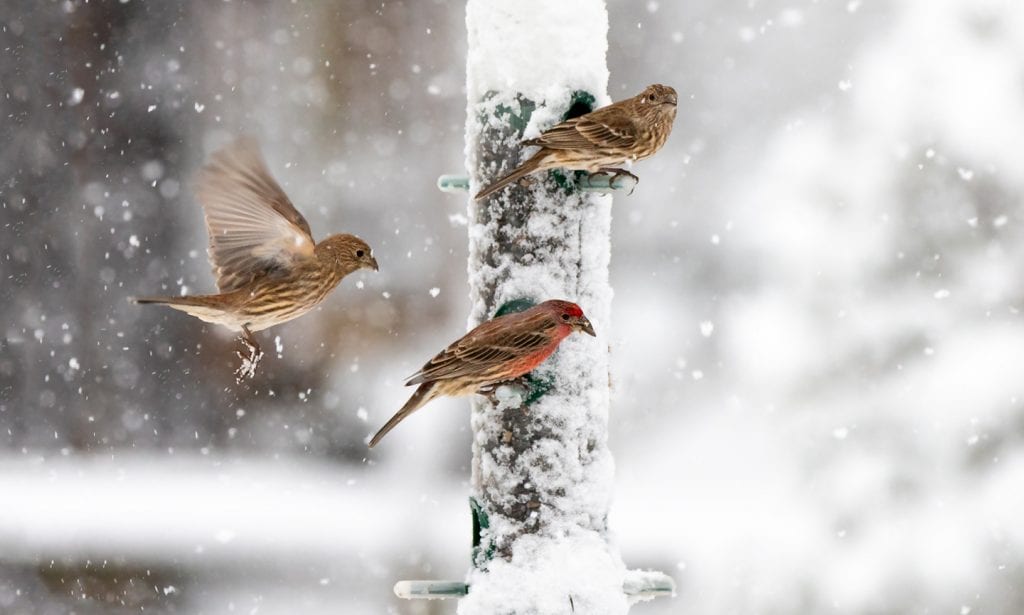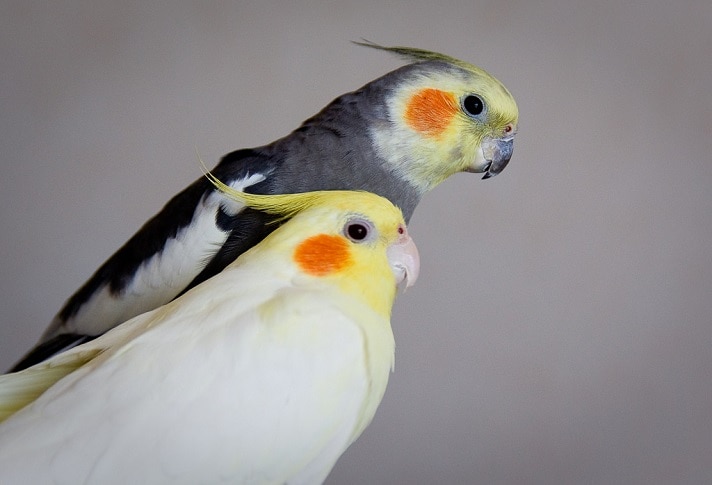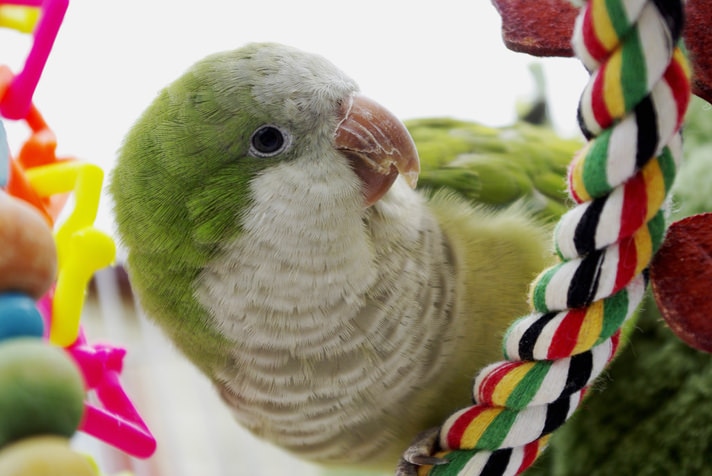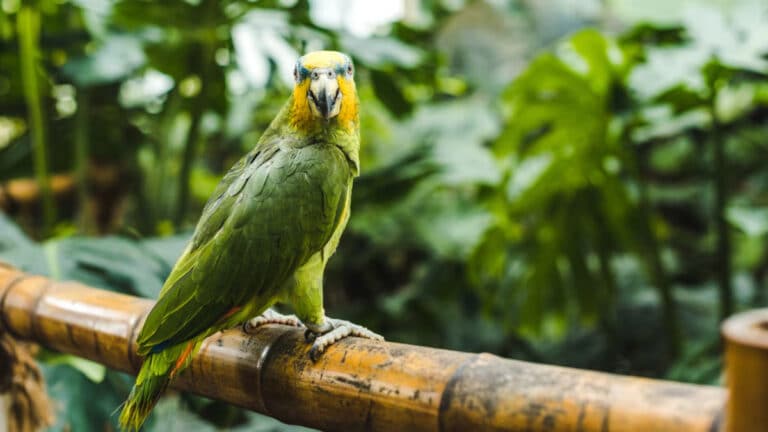Backyard bird watching, or birding, is an excellent way to unplug and get back in touch with nature. In fact, according to studies conducted by Cornell University’s Lab of Ornithology, watching birds around your home and attracting them to your yard may relieve anxiety and depression.
Even better, backyard birding is a practical, inexpensive hobby. It doesn’t even require you to have a yard. All you need is a regular supply of food, bird feeders, clean water and a safe environment free of predators and food competitors, namely squirrels.
Placing Your Feeder
Choosing a location to hang your feeder will help keep squirrels away from the food, and it can attract more birds.
“Open areas are best to attract a variety of bird species,” says Julius M. Tepper, DVM, founding member of the Association of Avian Veterinarians in Teaneck, New Jersey.
Passing birds will visit a feeder that is visible and easily accessible. Plus, birds prefer being around other birds, so the more popular your feeder, the more likely you’ll get a variety of birds.
When choosing a spot for your bird feeder, take these things into consideration:
- Noise levels: Birds tend to visit feeders and nest in bird homes where it’s quiet.
- Windows: Place feeders less than 3 feet or more than 10 feet away from a window to prevent fatal collisions.
- Chemicals: To avoid contamination, place feeders away from areas where pesticides are used.
Wherever you decide to place your feeder, make sure it’s in a spot where you can watch birds enjoy it. After all, that’s part of the fun!
Attracting Birds to Your Feeder
Not all birds eat the same foods, so if you’re just starting out, try a basic seed mix. Once you become familiar with the different birds that visit you regularly, or if you want to attract a specific species, you can offer specific seed mixes separately with multi-seed feeders.
Not all birds eat in the same manner, either. For example, finches like the freedom to forage in a variety of perched positions—even upside down. To provide these social songbirds with an appropriate perch, try Kaytee’s finch-specific sock feeder. A soft mesh sock covers the tube feeders. There are also plain tube feeders available. Whichever you chose, keep it filled with the finch’s favorite food, Nyjer seed, to keep them coming back for more.
Hummingbirds are a popular wild bird. Novice and expert birders find them fascinating to watch because of their speed and dexterity. To attract these delightful little wild birds, offer them hummingbird nectar in a hummingbird-specific feeder, which come in plastic and glass and feature specially designed ports for the delightful birds to feast. Try Kaytee’s Electro hummingbird nectar in the red Perky-Pet Daisy Vase glass feeder. Hummingbirds are known to be attracted to the color red.
Other ways to attract birds:
- Install a bird bath or fountain. Birds naturally are drawn to water, and the sound of running or bubbling water will bring them in.
- Provide them natural cover with trees or bushes.
- Plant brightly colored flowers.
- Offer nearby perches and bird houses for shelter.
Discouraging Squirrels
“The biggest problem with backyard bird feeders is squirrels emptying the feeder, especially if it’s suspended from a tree branch,” Dr. Tepper says.
Squirrels are indeed a problem for many backyard birders. In fact, there are dozens of websites devoted to discouraging squirrels and hundreds of ideas on squirrel-proofing bird feeders.
Squirrels can wreak havoc on your bird population. The voracious eaters will devour seed until the feeder is empty, leaving nothing for the birds you want to attract. They also are territorial and can be aggressive to birds, chasing or scaring them away. Squirrels have been known to even eat birds’ eggs and kill nestlings.
To prevent squirrels from gobbling down your seed, use a squirrel-proof bird feeder with a baffle shield, Tepper says. Baffles, such as North States’ Two-Way Squirrel Baffle, are made of plastic or metal and will tilt or twirl when climbed on so squirrels can’t access the food.
Other ways to discourage squirrels from accessing your bird feeder include:
- Securing a wire cage around your feeder.
- Attaching a squirrel spinner that “spins” the squirrels off the feeder when he tries to stand on it.
- Using seed, such as safflower, that tastes bitter to squirrels.
- Choosing a location away from trees, wires or roofs where squirrels can jump from them to the feeder.
Now you’re ready to start your bird-watching experience. Find a comfortable chair, turn off your mobile device and feel the weight of the world being lifted off your shoulders.
Share:














